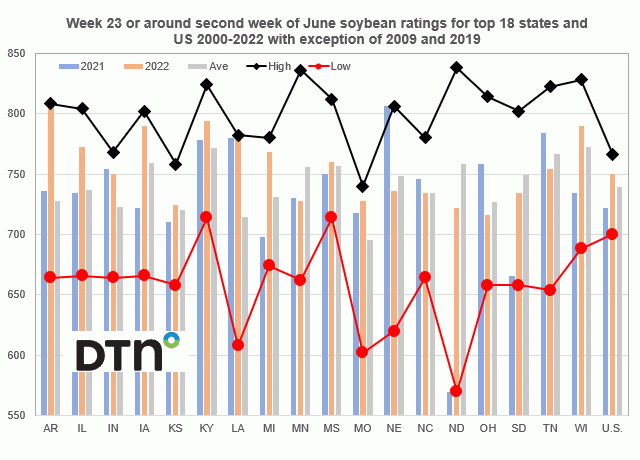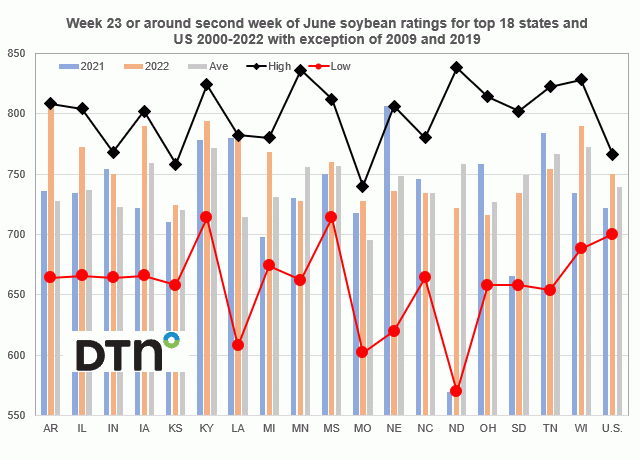Fundamentally Speaking
Change in Corn Area From March to June
On March 31, USDA's prospective plantings report indicated that U.S. farmers planned to seed 96.990 million acres of corn which, other than the 97.155 million planted in 2012, would be the highest U.S. corn acreage since 1937.
Of course the survey period for the March intentions report was from February 28 to March 18 and much has changed since then.
Due to a number of different factors, it is thought that the upcoming June 30 Acreage Report will show actual plantings perhaps 2-3 million below the 97 million intentions figure.
This graphic shows the change in planted area for U.S. corn from the March intentions to the June acreage report in thousand acres on the left hand axis vs. the November soybean/December corn futures price ratio on April 1 and again on June 1 plotted on the right hand axis.
Also shown in the yellow boxes is the percent of the U.S. corn crop planted by May 20 each year from 1996 to 2020.
P[L1] D[0x0] M[300x250] OOP[F] ADUNIT[] T[]
It is thought that corn acreage declines from the March prospective plantings to the June acreage report stem from two factors.
The first is weather, especially if it is bad, meaning cold and wet where it gets too late in the season for some farmers to continue to seed corn and instead switch to a crop that can be planted later which in the Midwest is very often soybeans.
Then there is changing economics where either corn or soybean prices become more or less attractive on a relative basis or if possible, farmers can adjust their plantings based on this consideration.
Here we use the new crop soybean-corn ratio where 2.35 is considered the magic number.
A ratio over this implies greater soybean area while conversely a ratio less than 2.35 would imply increased corn acreage relative to soybeans.
This year, 83% of the crop was planted as of May 20, slightly above the 78-80% long-term average, suggesting maybe more acres planted.
Conversely, we are picking up reports of quite a bit of prevented planting in North Dakota as they are dealing with a second year in a row of very challenging planting conditions.
We could also see a rise in PP claims in Illinois.
As for economics, this year's SX/CZ ratio on April 1 was an already lofty 2.49 which is well above the 2.29 average and that ratio increased over the next two months.
As of June 1 it was 2.56, also above the 2.33 average and the third highest for that date since 2005 and this also augers for a shift from corn to soybeans.
Of course, we have to bring up last year for on 5/20/19, only 50% of the nation's corn crop was in the ground, yet the June acreage report was a real shocker last year showing only a 1.092 million acre decline in planted corn area between the March intentions and the June acreage report.
What kept farmers in the field despite the calendar was one of the biggest April 1 to June 1 adjustments ever in the soybean/corn ratio moving from 2.39 to 2.05, a 14.2% decline which is by far the largest change in over 25 years.
© (c) Copyright 2020 DTN, LLC. All rights reserved.






Comments
To comment, please Log In or Join our Community .